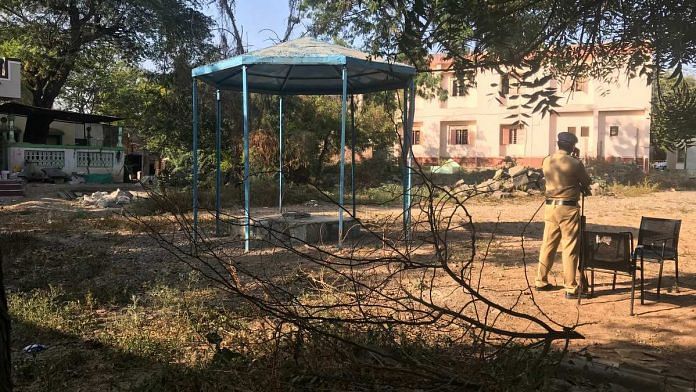Since clashes over a piece of history involving Dalits and Marathas, the village of Vadhu Budruk has lived under constant police presence.
Mumbai: In December last year, the Vadhu Budruk village in Pune district simmered as local Marathas and Dalits clashed over a disputed piece of history — whether it was a Dalit who performed the last rites of Maratha warrior king Chhatrapati Shivaji or the Marathas.
The conflict is said to have been a contributing factor in the violence on Bhima-Koregaon memorial day on 1 January, when stones were pelted and vehicles set ablaze as lakhs of Dalits were making their way to the Bhima-Koregaon vijaystambh, the victory pillar, not far from the Vadhu Budruk village.
A year on, while there have been no more skirmishes in the village with an outwardly calm between the two communities, the village is gripped with an underlying sense of discord as the dispute over the two versions of history continues.
“Earlier this year, we wrote to the Pune district collector’s office requesting the state government to form a committee of experts and give a verdict once and for all on which version is accurate. But we haven’t heard from them on this,” Shankar Bhakre, gramsevak of the village, told ThePrint.
Also read: This Bhima-Koregaon memorial day, villagers will be ready with flowers, water & toilets
Police presence, a calm disquiet
The village has a memorial for Sambhaji, son of Chhatrapati Shivaji, on one side of the village square. Right opposite is a small memorial of Govind Gopal Gaikwad, who, the Dalits say, collected the remains of Chhatrapati Sambhaji and performed his final rites, defying orders of Mughal emperor Aurangzeb. The samadhi (memorial) is covered with a blue umbrella-like structure that some locals say came up only in the past few years.
Since the clashes last year when the structure was vandalised and damaged, the village has lived under a cloud of police presence. The government has stationed a State Reserve Police Force (SRPF) unit at the Gaikwad memorial to ensure there are no more conflicts.
“We have three units stationed around this area. One is here, the other is near the vijaystambh and a third is reserve. Every unit has 30 people,” a constable stationed at the memorial said on condition of anonymity.
“I have been here only for a few weeks now, but from what I have heard, the village has been peaceful since last year’s clash. We don’t let too many people come near the Govind Gopal Gaikwad samadhi. People pray and go, that’s fine,” said the constable.
Atul Chavan, who lives right across the square where the two communities clashed, said there was a haldi function at his house that day.
“My father is a savarna (upper caste) who married a Dalit, so we have people from both communities attending the wedding. On the face of it, everything is fine, but there is a conscious effort to avoid discussing what happened, or any aspect related to the dispute,” he said.
“As a child, I remember freely going to houses of both Marathas and Dalits. Children would freely mingle. Somehow it’s not the same today,” he added.
Prabhakar Gaude, a Dalit, sitting with his old friend, Dilip Gavhane, a Maratha, outside a village shop, said. “We are old friends, so it’s different with us. But overall, though the village is peaceful we don’t feel completely at ease.”
“There is a lot of anger within the community against the state government too,” added Gaude.
The dispute
According to the 2011 Census, Vadhu Budruk, located in Pune’s Shirur taluka, has a population of 5,700 people, of which merely 352 are from Scheduled Castes.
Contrary to the Dalits in the village, the Marathas claim that it was their ancestors, the Shivale Deshmukhs — Bapuji Buva and his wife Padmavati — who performed the last rites of the Maratha king.
On 29 December last year, the two communities clashed after a board was installed outside the Gaikwad memorial, displaying the Dalit version of the history. Marathas allegedly damaged the memorial after which a case was registered against 49 people under the Scheduled Castes and Scheduled Tribes (Prevention of Atrocities) Act, 1989.
“The board also contained statements like how it was a Dalit who stepped up for Sambhaji Maharaj when the Marathas were too scared to defy Emperor Aurangzeb’s orders and act. That infuriated the Marathas and triggered the clash. The situation is peaceful now though,” an official from the Pune police said.
Authorities reinstalled the structure in February this year. Villagers even took a public oath to resolve their differences.
Also read: No evidence to link Hindu group leader Bhide to Bhima Koregaon attack, says Maharashtra CM



